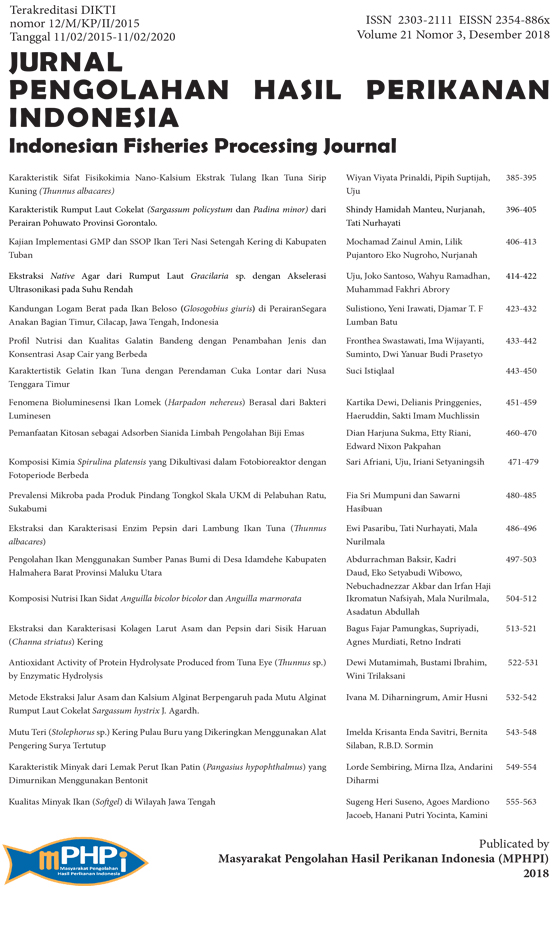Nutrition Profile and Quality of Milkfish Galantine Added By Different Type and Concentration of Liquid Smoke
Abstract
Galantin milkfish is one of the fish diversification products that can be used as a source of nutrition for the community with the specific appearance. To increase the level of product acceptance mainly aroma, liquid smoke is added as a flavoring agent that is safe to consume. This study aimed to determine the effect of the addition of different types of liquid smoke with appropriate concentrations on nutritional profiles (amino acids and fatty acids) and the quality (proximate and hedonic) of galantin milkfish. Experimental design of factorial was used in this research with three different types of liquid smoke, namely redestilation (R), filtration (F), and microencapsulation (M). The concentrations of the three types of liquid smoke usedwere 1% (1), 2% (2), and 3% (3) respectively. The results showed that the influence of the three types of liquid smoke and different concentrations significantly affected the profile of amino acids, fatty acids, moisture content, protein, fat, carbohydrates, energy and hedonic values of milkfish galantin (p<0.05). The dominant amino acid in the product was glutamic acid, while the highest EPA and DHA contents were respectively in F1 and M1 treatments. Water content of milk fish galantin was 69.82% -72.75%, protein 14.56% -16.73%, fat 4.03% -6.14%, ash 1.62% -2.84%, carbohydrates 2.86% -3.58%, and energy 111.55-138.90 Kal/100 g. The
results of the hedonic analysis showed that all the products produced were favored by the panelists.
results of the hedonic analysis showed that all the products produced were favored by the panelists.
Authors
SwastawatiF., WijayantiI., SumintoS., & PrasetyoD. Y. B. (2018). Nutrition Profile and Quality of Milkfish Galantine Added By Different Type and Concentration of Liquid Smoke. Jurnal Pengolahan Hasil Perikanan Indonesia, 21(3), 433-442. https://doi.org/10.17844/jphpi.v21i3.24713
Authors who publish with this journal agree to the following terms:
- Authors retain copyright and grant the journal right of first publication with the work simultaneously licensed under a Creative Commons Attribution License that allows others to share the work with an acknowledgement of the work's authorship and initial publication in this journal.
- Authors are able to enter into separate, additional contractual arrangements for the non-exclusive distribution of the journal's published version of the work (e.g., post it to an institutional repository or publish it in a book), with an acknowledgement of its initial publication in this journal.





